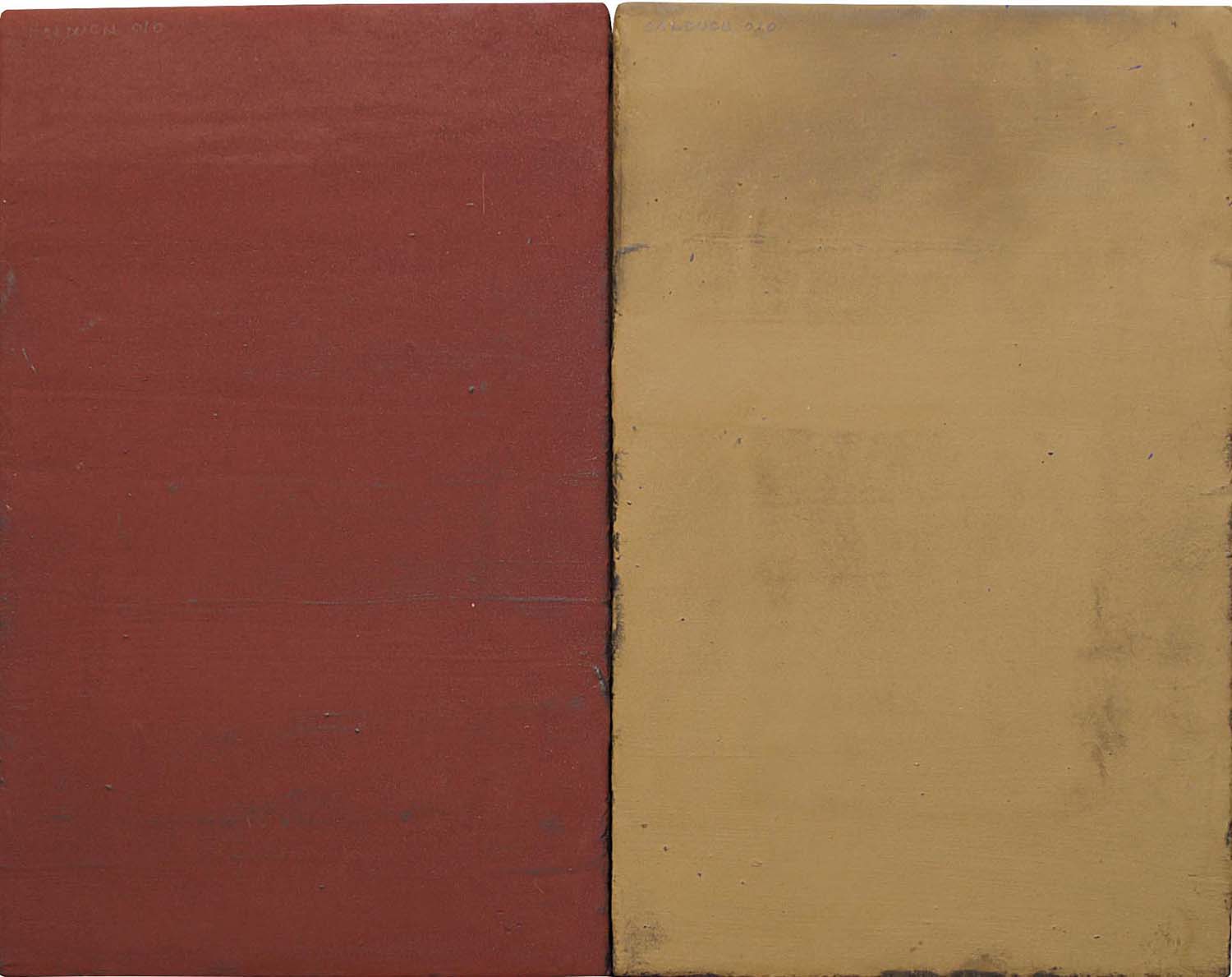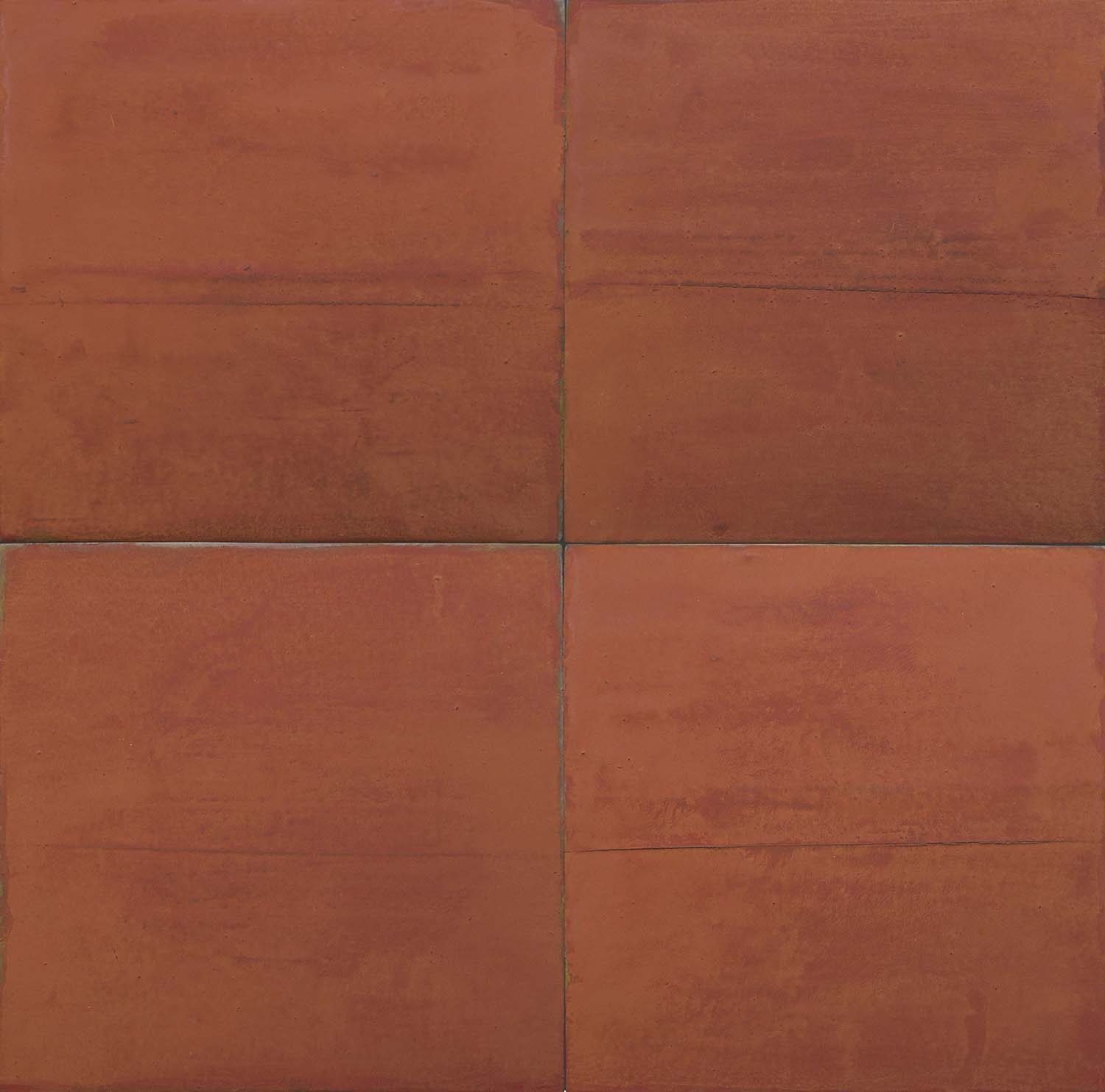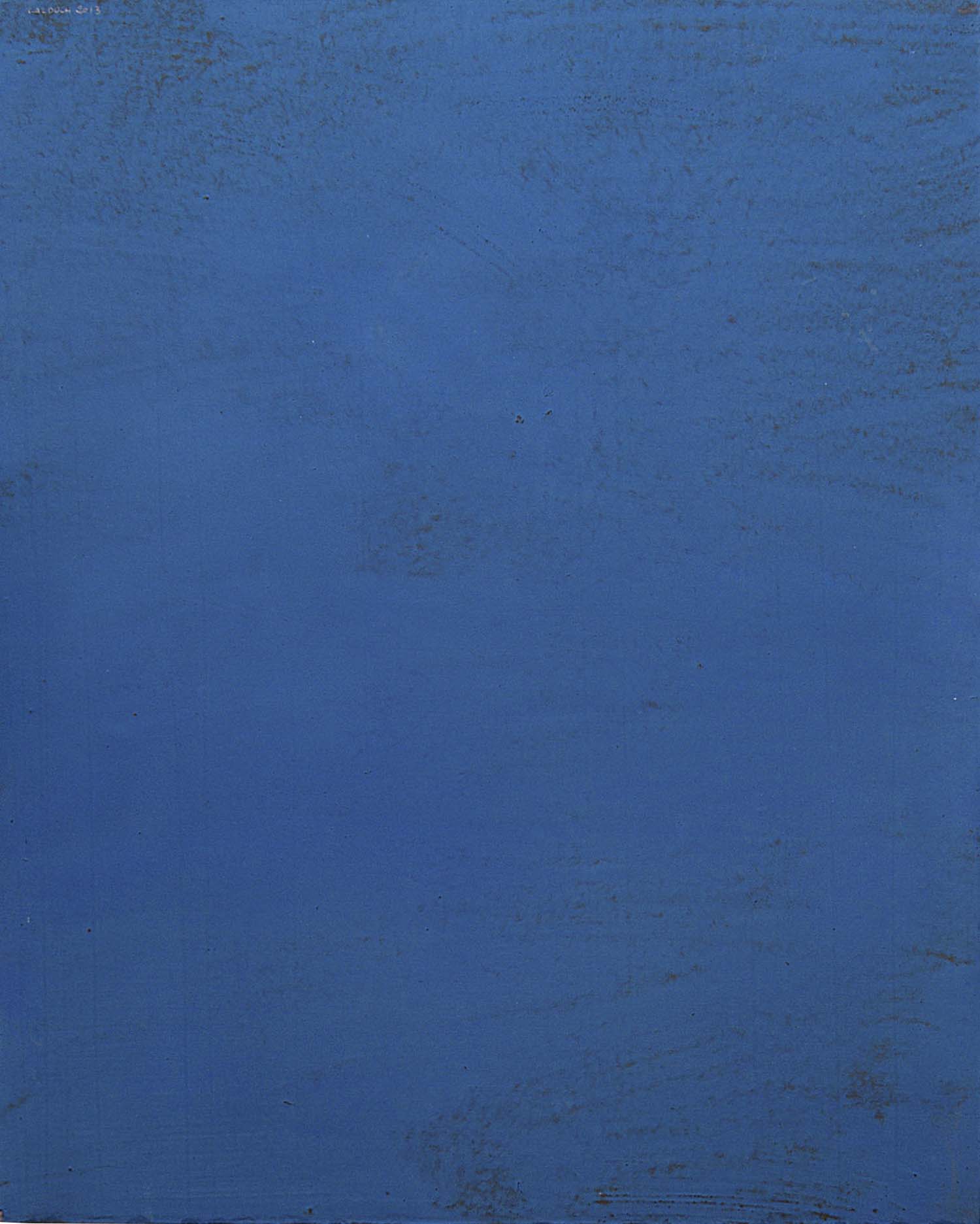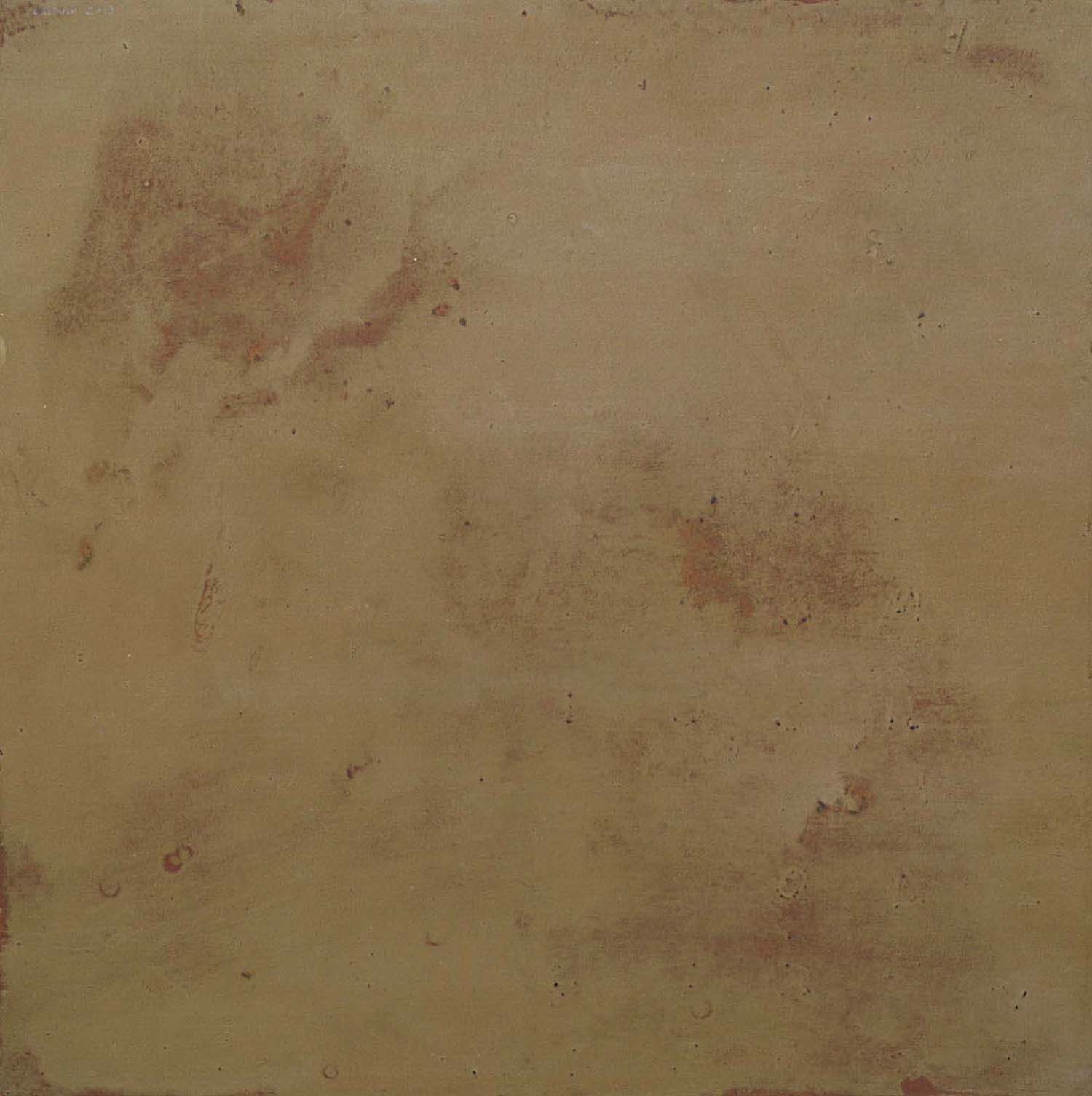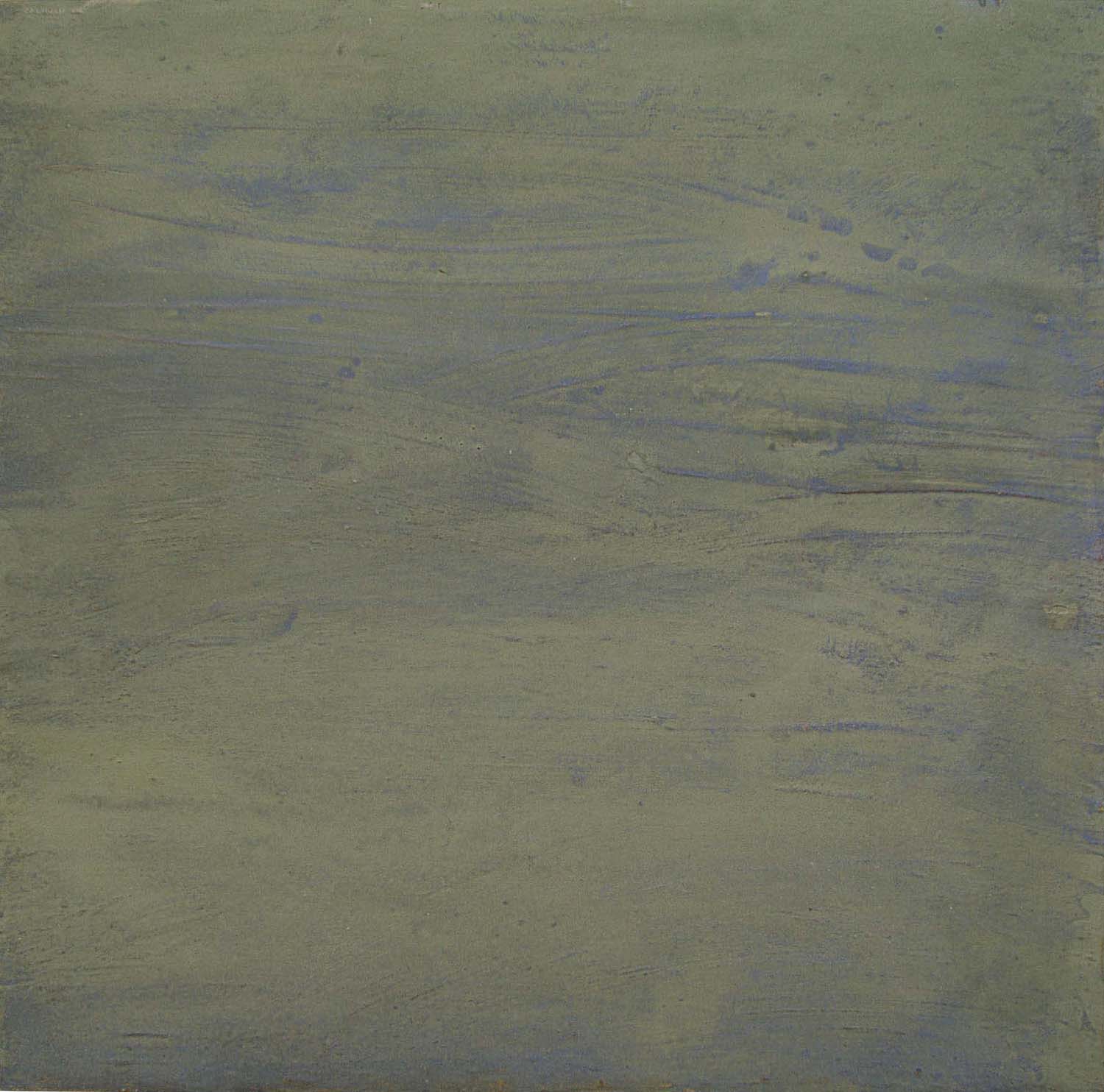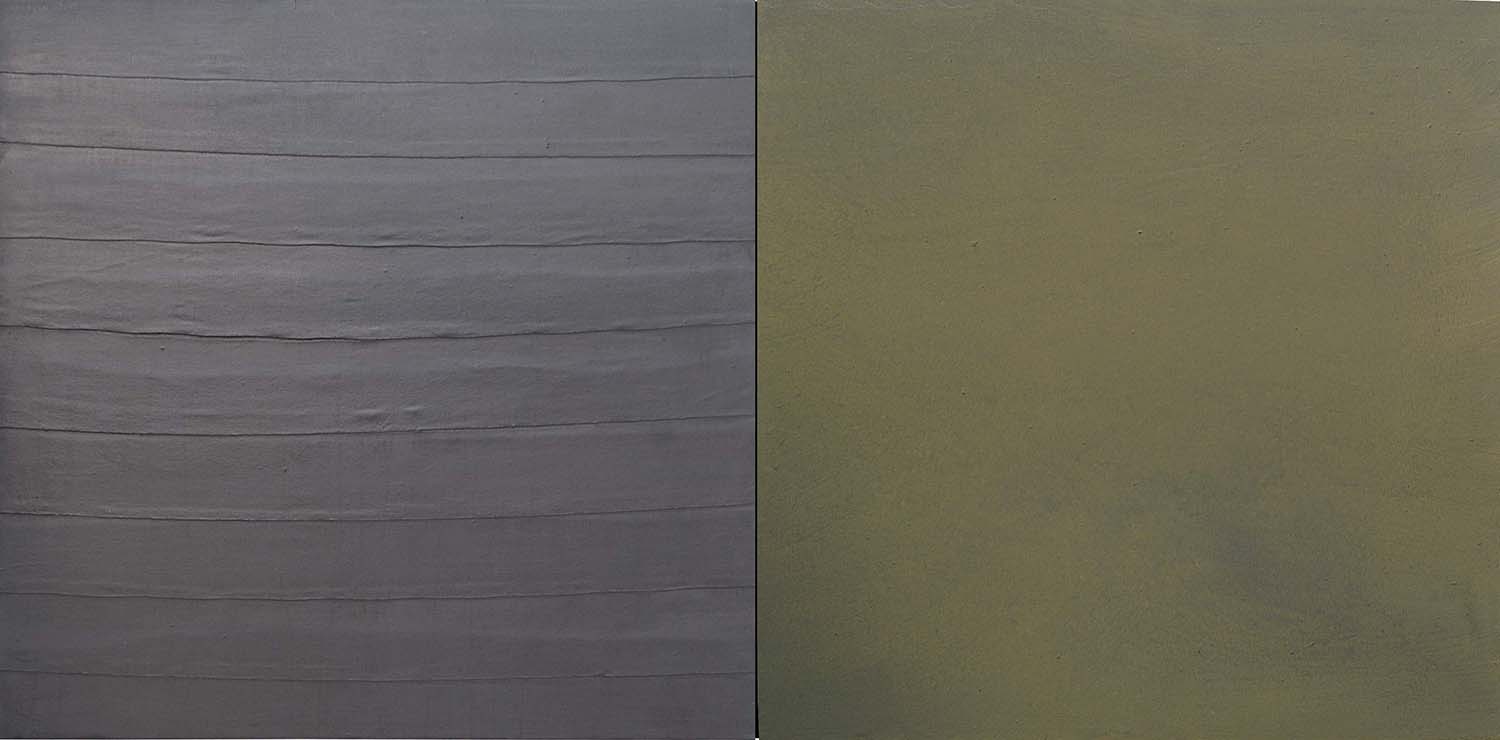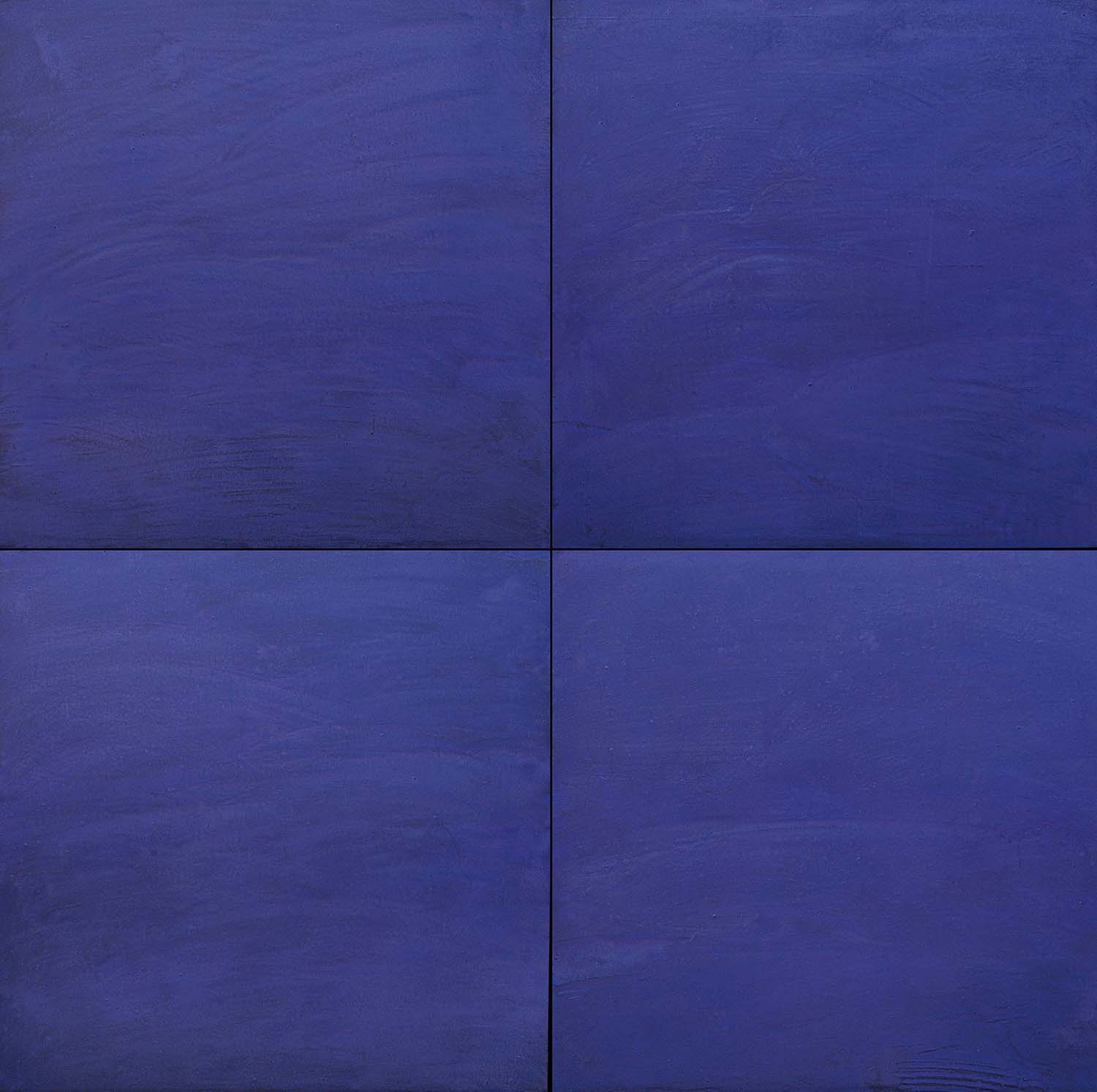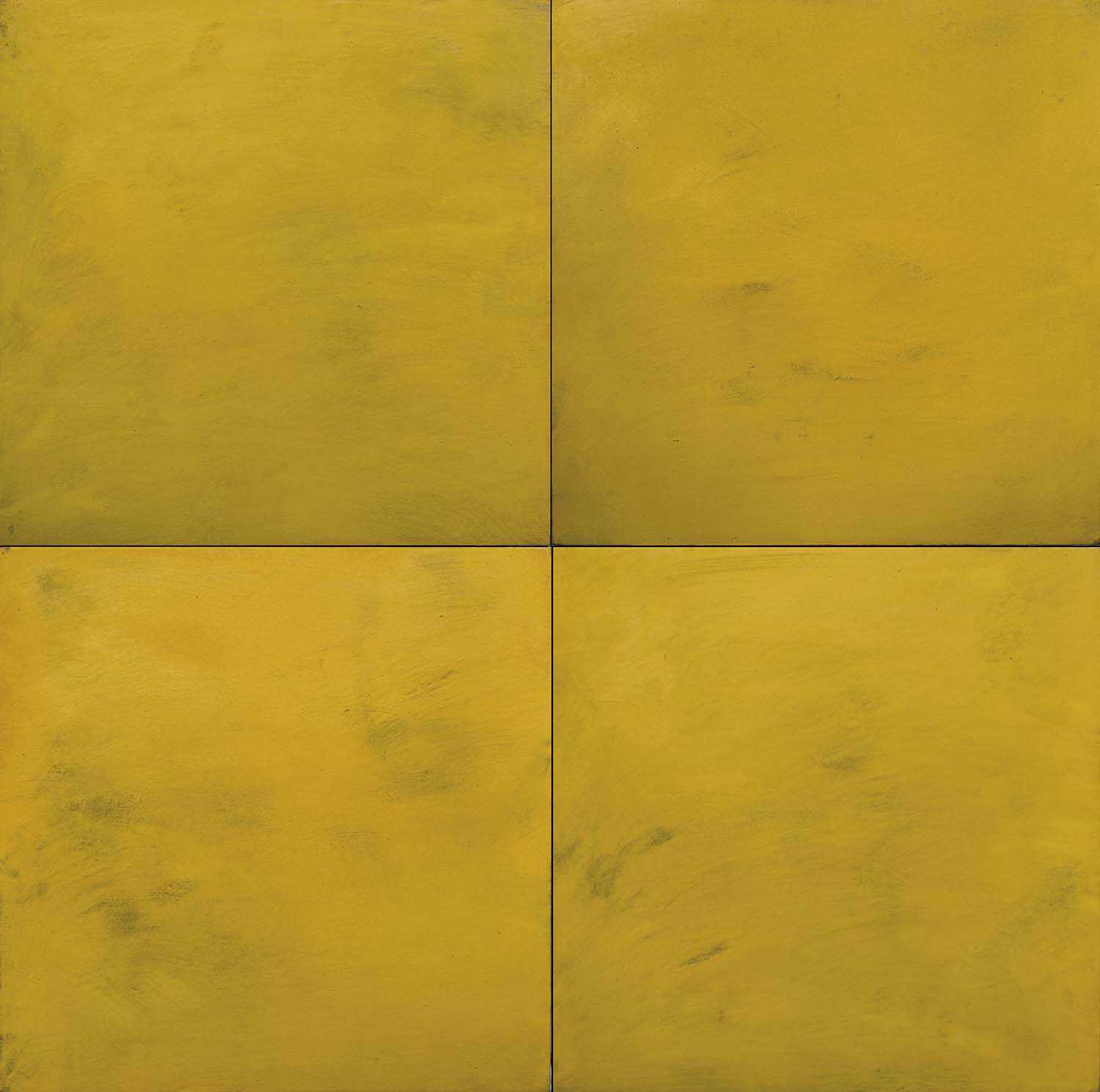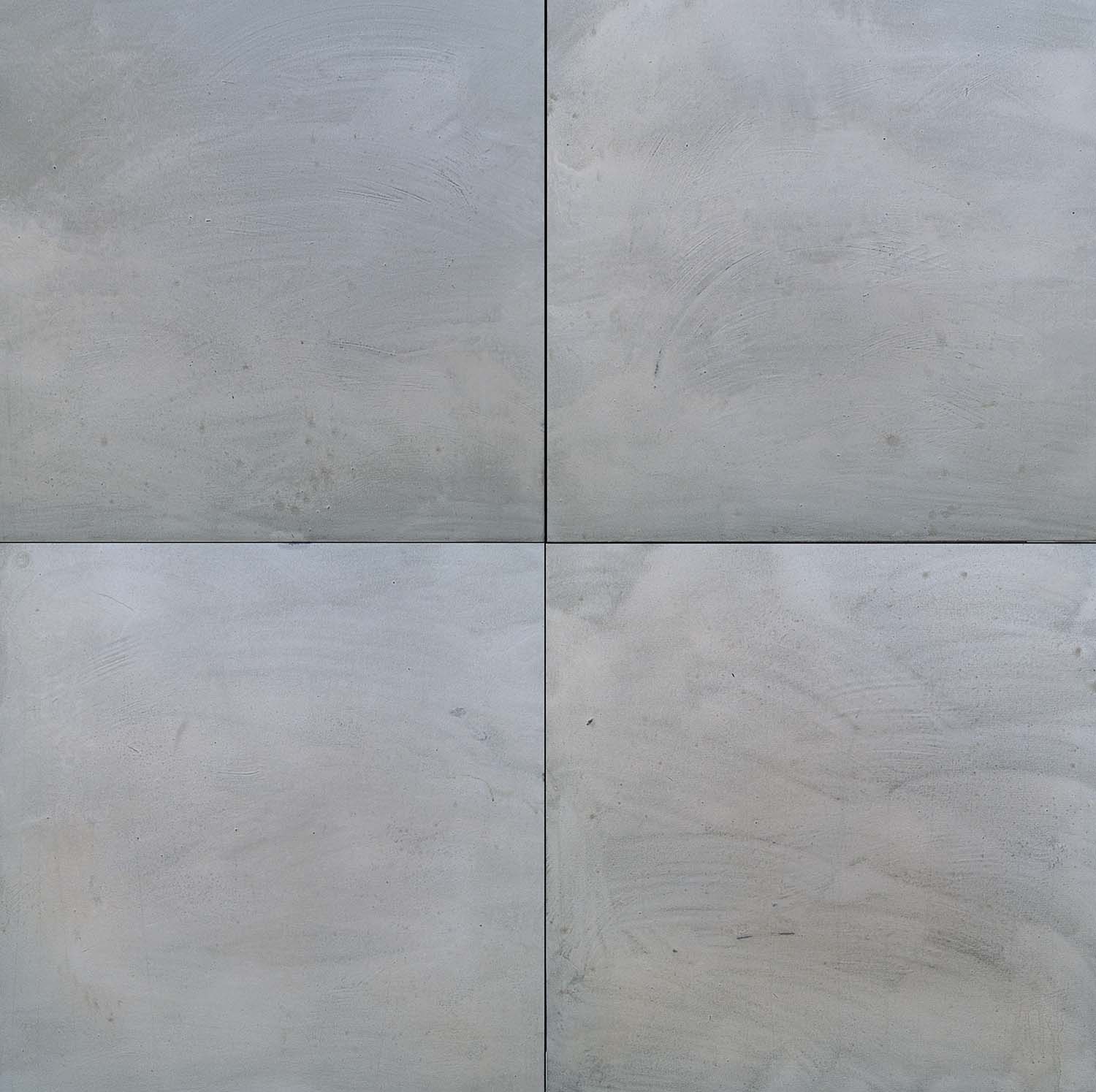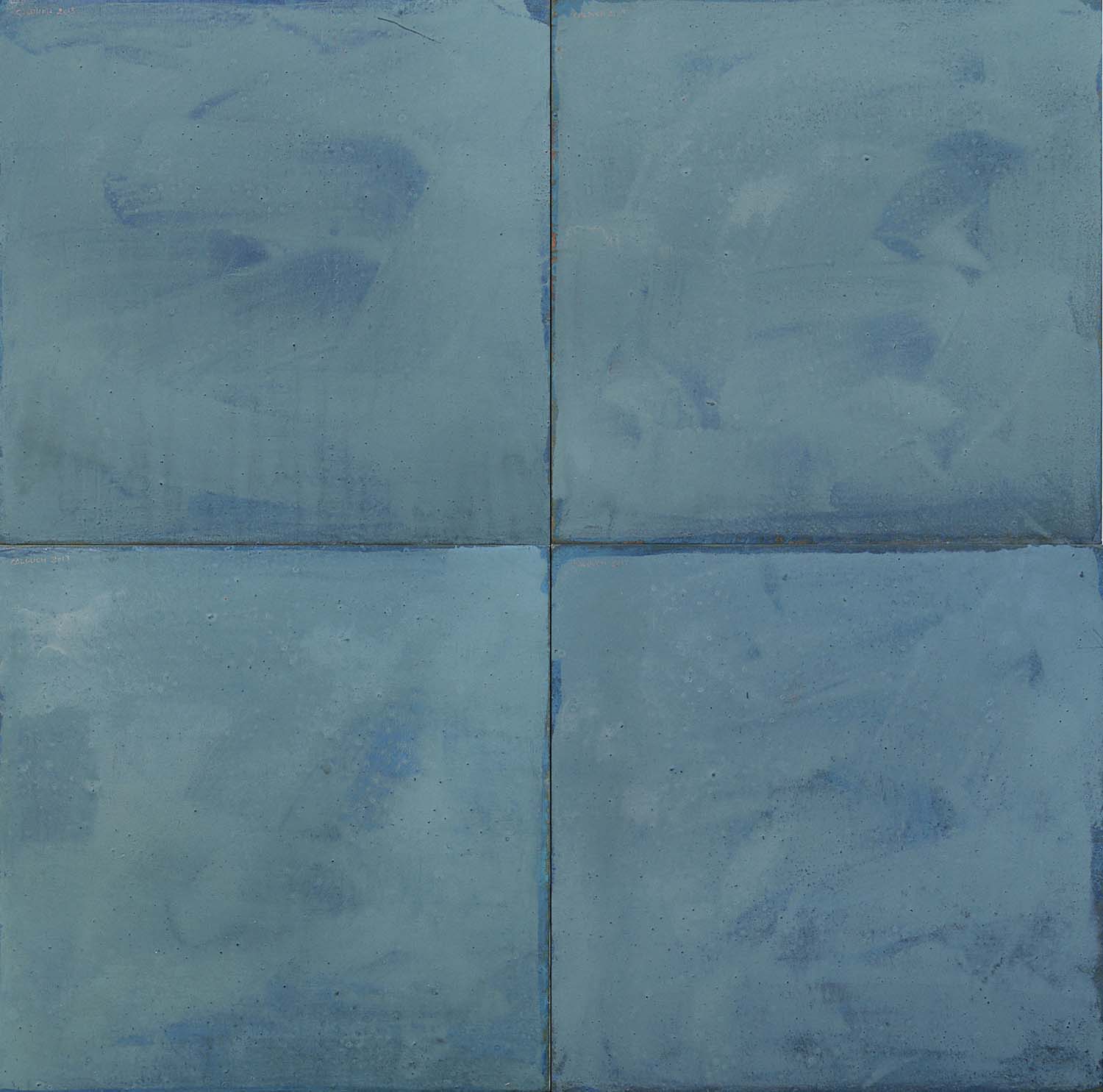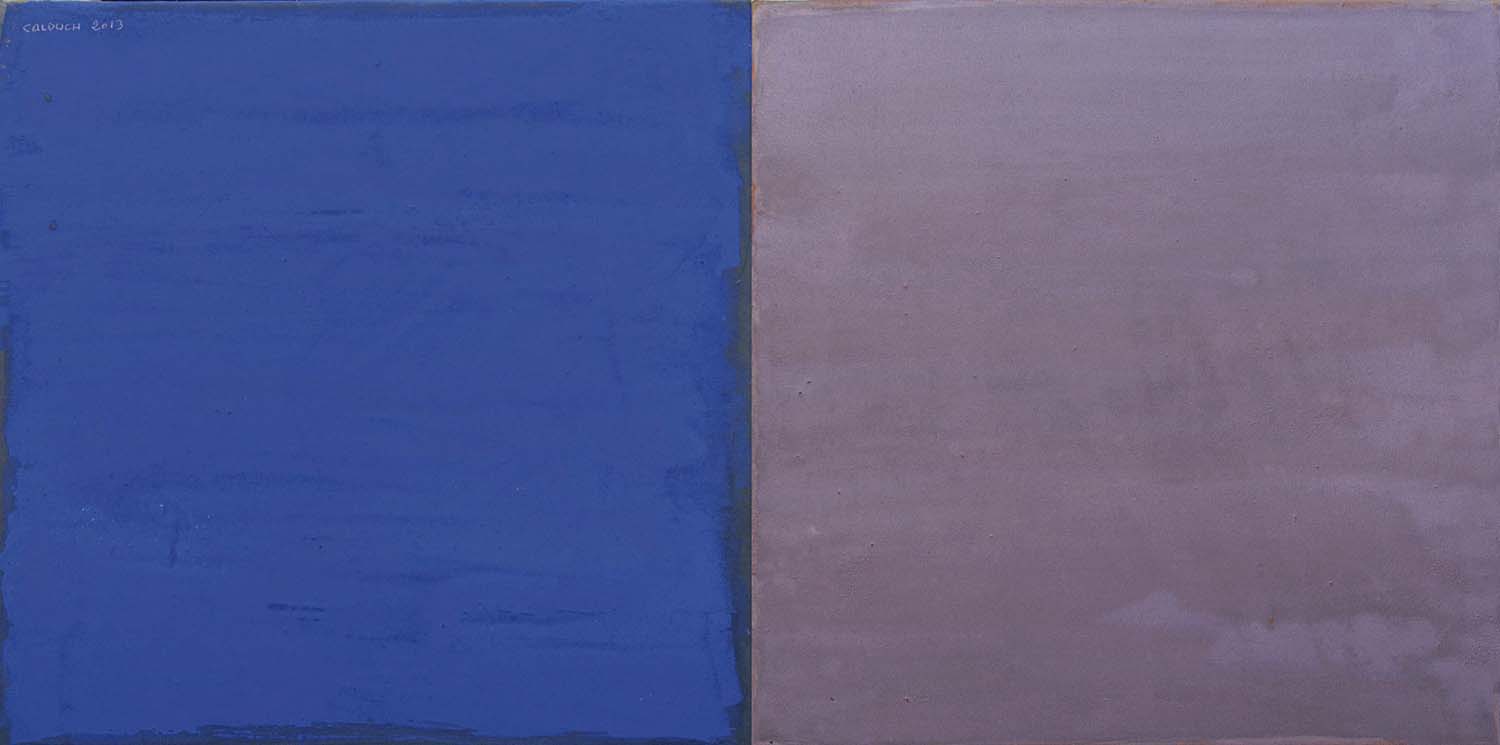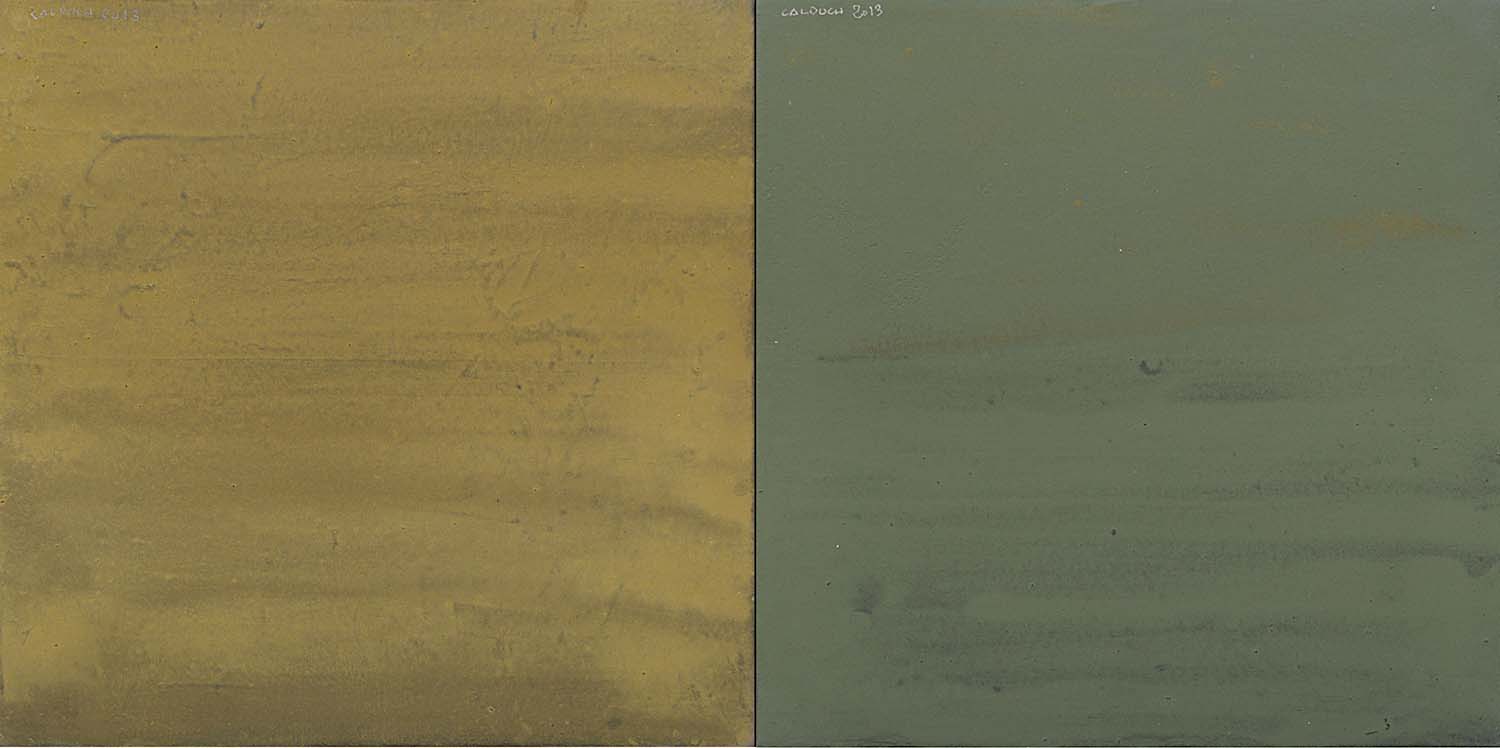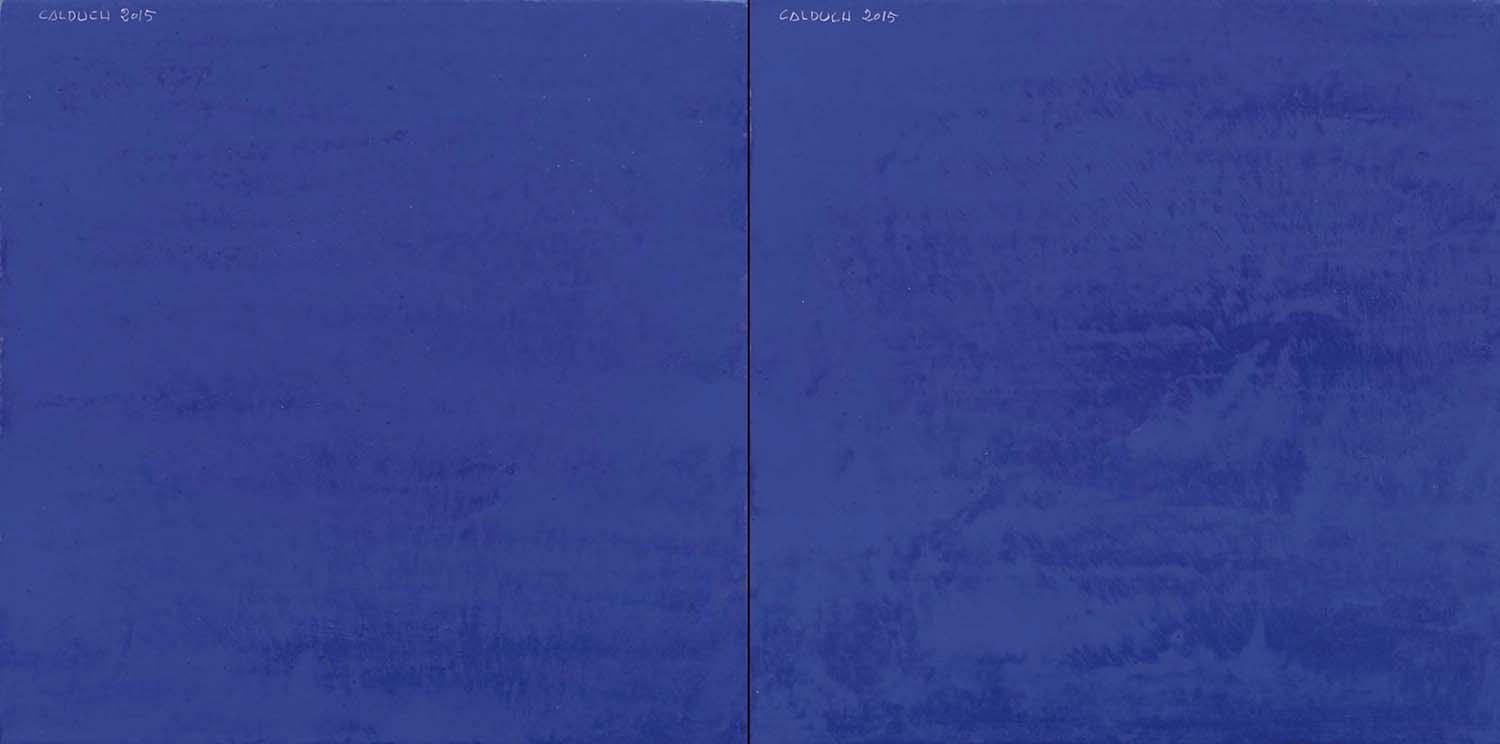Rafa Calduch
EVIDENCIA E INCERTIDUMBRE, IMAGEN Y PINTURA
Hablamos, desde un principio, de evidencia e incertidumbre, pero ¿qué es lo que podemos definir como evidente en la presente exposición? Probablemente, el hecho de que nos hallamos frente a un conjunto de cuadros monocromos que son mostrados de una manera aislada o, por el contrario, agrupados en dípticos y polípticos. Tras esta primera constatación, se puede seleccionar cualquiera de las obras expuestas y, tomándola como referente, partir de un supuesto que, si bien resulta un tanto incongruente en su formulación textual, no por ello debemos dejar de considerar. Dicho supuesto surge de una reflexión y del interrogante que asociamos a la misma: al margen de un determinado color y de una textura e, incluso, de unas concretas dimensiones y de una precisa ordenación modular, ¿ante qué nos están situando estos lienzos?
No cabe duda de que la pintura no puede darse con independencia de los elementos a los que hemos hecho alusión —elementos a los que lógicamente cabría añadir otros muchos—. No obstante, se ha de tener en cuenta que, pese a la obviedad que entraña la afirmación que vamos a realizar a continuación, la pintura —tanto la de estos monocromos como la de cualquier otra obra plástica— responde a una acción muy determinada y, por tanto, a un evento que se conjuga desde el propio hecho de pintar.
El resultado obtenido mediante esta actividad no es otro que un suceder, un transcurrir que actúa como verificación de que en ella —en la pintura y a través de la misma— algo está acaeciendo. Podría pensarse en un primer momento —y no de un modo erróneo— que lo ocurrido testimonia, más que refleja, una realidad temporal —la de ese tiempo que el propio quehacer técnico y procesual de la pintura concita, un tiempo, no hay que olvidarlo, que no se aviene ni se ajusta con el de la pintura de lo temporal, es decir, con el de la representación de la temporalidad—. Sin embargo, a pesar de que reconozcamos que pintar requiere un tiempo propio y que, por ello, genera un tiempo que también es específico —al igual que pasa con el mirar que la pintura nos reclama o con el pensar que la misma solicita—, aquello que acontece en su suceder responde, desde el punto de vista de quien observa dicho devenir, a otro tipo de planteamiento y de realidad.
Merleau-Ponty alude, siquiera sea de un modo tangencial, a esta circunstancia cuando se refiere al irrenunciable protagonismo que asume la corporalidad en el hecho perceptivo y, por tanto, en el fenómeno plástico, una corporalidad que hemos de entender no tanto como propiedad —no tenemos ni poseemos un cuerpo—, sino más bien como condición previa y sine qua non —somos cuerpo—.
Debido a ello, si partimos de este ser propio que hemos de considerar como impropio o, si se prefiere, si partimos de aquello que somos diciéndonos en relación a este ser cuerpo, podemos apuntar que la pintura es suceso —y que, asimismo, sucede— porque nos abre la posibilidad de sucedernos en ella, o sea, porque permite —al margen de lo que la misma pueda icónica o referencialmente albergar— coimplicarnos ante su presencia —siendo cuerpo enlazado a otro cuerpo— y que, a su vez, a través de ese gesto, podamos eventualizarnos en el hacer de su materia —descubriéndonos devenir frente a otro devenir—.
Coimplicar y eventualizar, desde esta perspectiva, son acciones que generan una incidencia en el presente, hecho mediante el que se resalta el aquí y el ahora de un acontecer en el que lo sucedido a un nivel pictórico —y así es puesto de relieve a través de estos monocromos— no tiene necesariamente que remitir al fagocitador universo de la imagen ni a su hipotética capacidad trastornadora o acomodaticia.
En este sentido, pintar, según acabamos de señalar, no sólo puede perturbar en función de lo que acaece referencial y semánticamente en la propia pintura —la posibilidad de que la misma, ya sea de una forma contenida o no, asuma la capacidad de actuar como imagen de índole turbadora y, por consiguiente, como relato de inquietud y zozobra—, sino porque, con independencia de lo que se considera como visible —de aquello que con ligereza o descuido calificamos de evidente, cuando en verdad nada lo es—, lo que el acto de pintar permite que sobrevenga — aquello que hace que pueda acoger nuestro suceder en su resultado— deriva de una doble corporalidad. Una fisicidad dúplice y simultánea que se vincula, por un lado, con su ser materia —es decir, con su propia objetualidad material— y, por otro, con su invitación a actuar como materia de nuestro ser.
En otras palabras, el que podamos sucedernos en la pintura responde a un requerimiento que dependiendo de una materia —la que constituye el propio lienzo— propicia no sólo el sabernos cuerpo, sino también el saber de lo corporal.
Insistimos en lo señalado —y regresamos de nuevo a los monocromos—. Al margen de la imagen, la ensimismada pintura de estas obras escribe el suceso de una materia que remite a la concreción de un tiempo y un espacio derivados de nuestro diálogo con ella. A través de este diálogo se elabora nuestro presente, un presente que se construye desde la percepción y que, ajeno al relato bullicioso de la representación y de su corolario mediático, actúa como crítica de la razón visual dominante, esa razón que utiliza la imagen como exceso escópico y como sobredimensionada hiperrealidad que coloniza y expropia a la realidad.
Teniendo en cuenta lo apuntado, se puede señalar que estos monocromos nos sitúan ante un suceder que, sin embargo, resulta un tanto paradójico, puesto que el suceso que concitan no sólo remite a una presencia — la inherente a los elementos que configuran la materialidad pictórica— y a su consiguiente eventualización el acontecimiento de sabernos ser en tanto que cuerpo—, sino también al hecho de que la presencia a la que impelen parece hallarse construida desde una contradictoria ausencia. Una ausencia, repetimos, de carácter relativo, dado que el pretendido vacío que invoca —dependiente de su minimalización expresiva— no se sustenta en un decir de lo vacuo o de la oquedad —o, si se prefiere, en un escribir despojado que se encuentra circunscrito a lo ausente—, sino en el habla —rebosante y plena— que destila el ejercicio y la consiguiente puesta en discurso de lo silente, un habla que lo que en verdad vehicula —e inevitablemente critica— es la vacuidad inherente al decir de lo excesivo.
Con ello, por tanto, no queremos señalar que los monocromos de Calduch remitan a una pintura silenciosa o construida a partir de silencios —debido a su menguada y autocontenida referencialidad—, sino que el discurso pictórico desarrollado utiliza el propio decir matérico —el habla que articula lo visible— para mostrar la perplejidad que suscita aquello que vemos y que, precisamente, la pintura contraría, ya que lo que en el suceder de esta desanecdotizada pintura acaece es una interrogación. Ésta va dirigida a cuestionar lo que supone el propio hecho del ver y la incertidumbre que, en el fondo, suscita la visibilidad, hecho a través del cual se pone de relieve cómo lo evidente no necesariamente se ha de vincular ni con lo indudable ni con lo visible.
La pintura, en último extremo, tiende a plantear una duda, una crítica dirigida hacia lo que vemos y hacia lo que la imagen impone. De este modo, mientras que la imagen busca construir lo que ha de haber y, junto a ello, demostrar aquello que se nos dice que es; la pintura se sustenta en el descrédito y en la desconfianza o, si se prefiere, en la perplejidad y en la crítica hacia esa imposición. En este sentido, actúa de manera paralela a la filosofía, tal como es definida por Alain Badiou, ya que, al igual que ésta, nos ayuda a “pensar no aquello que es, sino aquello que no es como es”.
Debido a ello, la pintura nos ayudaría a ver no sólo el enigma de la visibilidad, tal como proponía Merleau-Ponty, sino también a no ver lo considerado como evidente, un no ver que conlleva implícitamente la decantación por un ver que queda concebido como puesta en evidencia —acción que en este contexto debemos tomar en su doble acepción: como desvelamiento de lo oculto y como ridiculización del orden visual dominante—.
La filosofía —y seguimos con el citado Badiou— únicamente “se interesa por relaciones que no son relaciones”, es decir, por intentar establecer un diálogo con lo inconexo —con aquello que nadie había reparado en conectar—, hecho que conlleva decir lo indecible y que propicia mostrar lo velado y pensar lo prohibido. De manera similar a lo que acaece en el ámbito del pensamiento, la pintura, al establecer la posibilidad de una mirada que marida lo visible y lo invisible, también está impulsando el hecho de que veamos que no vemos aquello que sí que tendríamos que ver.
Ahora bien, en el caso que nos ocupa ¿qué es aquello que tendríamos que ver? Pensamos que lo que la misma nos ayuda a ver es algo que, escapando de lo aparente —de lo estrictamente visible—, también huye de la búsqueda de un esencialismo. No se trata, por ello, de que esta pintura nos aproxime a la pretendida pureza —y consiguiente verdad— del decir pictórico, hecho al que parecería contribuir la constricción de su discurso a una mínima expresión. Tampoco se trata de abordar su práctica como un ejercicio metafísico de austeridad retórica. Lo que entra en juego en esta pintura es su apuesta por una mirada paradójica y materialista que se encuentra alejada de cualquier veleidad idealista.
Si, por un lado, la misma nos permite que veamos tan sólo aquello que vemos —siguiendo, en parte, el comentario de Frank Stella sobre su pintura, “lo que ves es lo que ves”—, por otro, también nos impulsa a descreer de aquello que vemos. Por este motivo, constatar su presencia nos remite a la paradoja, puesto que, a pesar de que lo visto sea lo visto, es lo no visto aquello que nos hace ver.
Rafa calduch


